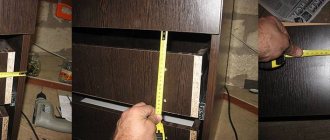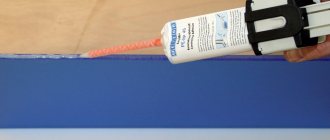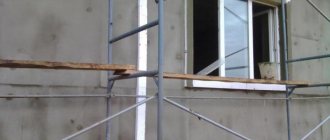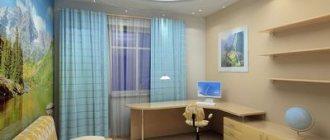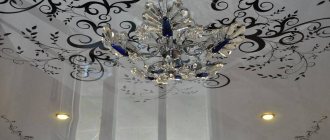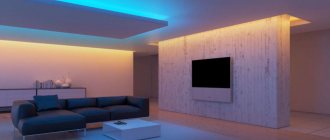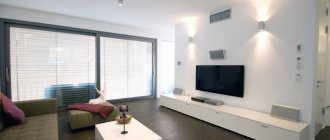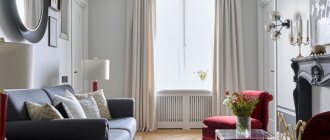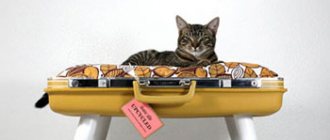PVC films
PVC film
is a decorative facing polymer film designed for decorating various surfaces. The main type of polymer films used for cladding are films based on polyvinyl chloride (PVC), usually 0.2-0.50 mm thick. Less common are finishing materials based on polystyrene, acrylic polymers, etc. They can be transparent or pigmented (for example, with a wood grain pattern), glossy, matte or semi-matte, rigid or elastic. PVC films, thanks to the huge variety of colors, textures and embossings, make it possible to imitate natural wood, marble, stone, etc. on the surface of the facing material, not only in appearance, but also to the touch. It is not only beautiful, but also practical, durable and inexpensive.
PVC film is applied
for decorating by pressing MDF boards, laminating wood boards and wrapping profiles. Used for the production of furniture facades, interior doors, furniture, wall panels, windows, etc.
Our company offers several types of film material:
Film for membrane-vacuum pressing.
Films for membrane-vacuum pressing are intended for cladding relief (paneled) surfaces such as: three-dimensional furniture facades (made of MDF), door leaves, table tops, as well as various decorative furniture elements using special equipment - a vacuum press (with or without a membrane) . As a rule, thicker films are used for these purposes, 0.3-0.5 mm (300-500 microns) thick, less often 0.25 mm (250 microns), both plain and with a printed pattern with a “wood-like” texture "
Film for lamination (lamination) of profile moldings (for window profiles and window sills).
This category of films is used for wrapping profile moldings made of any materials, be it wood, plastic (PVC) or metal (aluminum). Cladding of the profile is carried out using a cladding installation (machine for wrapping profile moldings). It should be noted that for laminating window/door profiles, two-layer PVC films with a top acrylic layer for protection against UV radiation are used.
Film used for laminating smooth surfaces.
This type of film is suitable for cladding flat surfaces such as: panels (PVC and MDF), particle boards (MDF and chipboard), cabinet furniture walls, window sills. It’s worth mentioning right away that the use of polymer films for cladding chipboard is very limited due to the low physical and mechanical characteristics of the resulting coating and low heat resistance.
PVC films have the following advantages:
a variety of decorative patterns, structures, colors and ideas for creating stylish doors and furniture;
constancy of color and appearance, which creates the opportunity to solve the problem of replacing damaged parts of doors and furniture;
environmental friendliness of materials: PVC film is produced using paints and varnishes that are safe for human health;
possibility of selecting PVC film for laminated chipboard decors;
resistance to external influences, easy to maintain.
Source: www.alfint.ru
Characteristics of PVC films for the production of furniture and doors
PVC film significantly expands design possibilities in the production of furniture and doors. A variety of options allows you to achieve aging effects, stylize them like natural wood, natural stone or marble, create surfaces that imitate metal, apply embossing, decorative prints and three-dimensional holographic images. Don't underestimate the protective functions. Polyvinyl chloride has properties that significantly increase the performance characteristics of doors and cabinet furniture:
- Water resistance;
- Environmental Safety;
- Wide operating temperature range;
- No fading under direct sunlight;
- Resistance to chemical environments and mechanical stress;
- Antibacterial treatment that prevents pathogenic processes.
For use in furniture production, roll materials from PVC film with a thickness of 0.15 to 0.8 mm are produced. The roll length is 100-500 meters. Manufacturers offer glossy, matte and textured film coatings in any color and design. The duration of operation depends on the individual characteristics of the polymer and is indicated by the manufacturer. The service life can reach 2-10 years. In case of premature loss of aesthetic properties, the coating is restored with self-adhesive material.
Important point.
The decorative layer applied by the factory method fits tightly to the furniture facade or door leaf. The wear-resistant material can withstand severe loads, but if the operating rules are not followed, damage is likely. Polymer products with an adhesive layer, which are designed for restoration and production of interior accessories at home, help solve the problems that have arisen. By selecting a self-adhesive film, it is easy to match the shade and design to the desired parameters.
Types of film materials for decorative processing of doors and furniture
Polymer coatings used in furniture production differ not only in aesthetic effects, but also in operational properties. Glossy surfaces look great, visually expanding the space due to reflectivity. Glossy polyvinyl chloride serves as long-term protection against moisture and accidental damage, therefore it is often used for finishing kitchen sets, doors and bathroom furniture. The coating can easily withstand cleaning agents, but requires regular maintenance.
Matte PVC film is less demanding because it does not leave marks from drops, fingerprints and other contaminants. The material gives products an elegant look, allowing you to eliminate glare due to the lack of gloss, so it is also in demand. Textured coatings are another type that is in high demand. Imitation of natural materials and natural color palette is a trend that is always relevant. In the production of doors and furniture, the fashionable interior trend makes it possible to achieve particularly successful effects.
Self-adhesive polymer coatings are designed for use in small workshops or at home. The material is easy to use and does not require special equipment or serious skills for application to the surface being treated. Fixation is ensured by the adhesive composition, which is already applied to one side. If you follow the manufacturer's recommendations, after removing the protective layer and applying it to MDF or chipboard, the film fits tightly to the base and looks almost the same as the factory finish.
Important point.
Self-adhesive roll products for decorating doors and cabinet furniture are produced using calendering and casting technologies. The first method is implemented by passing heated polyvinyl chloride through rollers to uniformly apply a thin layer to a smooth surface. The casting method is used for structural finishing due to shrinkage of the material.
Where is matte PVC film used?
Matte furniture film is most often used for finishing furniture facades, including:
- built-in kitchens;
- cabinets;
- bathroom furniture;
- bedroom sets and much more.
Also, matte film for furniture facades is excellent for finishing horizontal surfaces, for example, kitchen countertops, computer or office tables.
The optimal thickness of the material allows it to be applied to shaped surfaces, for example, door trims and all kinds of decorative furniture elements.
Along with all of the above, the material is used for the design of molded products, in particular, all kinds of profiles - door, window, finishing, as well as baseboards.
Matte film for kitchen facades and the possibilities of its use
Matte kitchen film, used for finishing facades and other surfaces discussed above, makes it possible to:
- Ensure furniture stability against temperature changes. The film can withstand heating up to +80 degrees, the material prevents deformation of kitchen cabinets due to the thermal effects of a frequently operating stove.
- Make surface care as easy as possible. Matte kitchen film can be easily cleaned with a regular sponge; detergents can be used to remove grease and other difficult contaminants. The only exceptions are products with abrasive particles that damage the film surface. It is also worth noting that on a matte surface, fingerprints and other minor dirt are less noticeable than on a glossy surface.
- Protect MDF or other facade material from moisture. This is especially important for the kitchen and bath, where, along with constant temperature changes, abundant steam formation occurs.
- Ensure health safety. PVC film is completely harmless, under the influence of high temperatures and over time it does not emit harmful substances.
- Increase the aesthetic appeal of the furniture facade. Matte film looks very impressive and allows you to diversify the appearance of furniture. Thanks to the wide range of colors of the material, the furniture finished with it fits perfectly into the interior of any palette and style.
Factory technologies for applying PVC film to furniture facades and door leaves
Film polymers are a common method of finishing products in enterprises producing furniture and interior doors. Waste from the main production goes to divisions engaged in finishing small interior parts. PVC film covers floor skirting boards and decorative linings for decorating door or window openings. Several common technologies are used for industrial coating. The choice is determined by the complexity of the base and the type of material.
Laminating when finishing with PVC film
The technology of covering the base surface using professional equipment is used in different temperature conditions. In the production of PVC films for doors and furniture, a distinction is made between cold, warm and hot laminating. The first method is used to process smooth substrates that are covered with an adhesive layer to roll the film coating under pressure. During warm lamination, to eliminate excess moisture, the glue is preheated and the film is pressed until polymerization is complete.
The hot method requires processing with rollers at 120-160 °C on an industrial machine. The use of laminating technology ensures uniform distribution of glue and reliable fixation of the coating under a vacuum press. But under the influence of high temperatures or extreme loads during the production process, deformation of the PVC film is possible. Certain restrictions have been established on the use of the method for the decorative design of products made from slab materials. A smooth MDF or chipboard surface is a must.
Lamination of cabinet furniture and interior doors
The technology for finishing furniture products and door structures with film polymer without the use of glue is based on lamination. This method is used for finishing products of complex configurations. Lamination of uneven surfaces and structural parts of original shape is acceptable. During the production process, the complex element is wrapped in PVC film, which tightly adheres to the surface under pressure as the temperature rises. An effective result is guaranteed by technological features:
- When heated, the plasticity of the film polymer increases;
- Under the influence of pressure, reliable fixation is achieved;
- For crimping, films with a special coating are used.
For laminating furniture and doors, polyvinyl chloride treated with synthetic resins is produced. When using this technology, coating is successfully rolled onto radial parts made from chipboard and MDF boards. The method makes it possible to achieve the formation of a sealed decorative surface that is not prone to delamination and is chemically stable. During the production process, it is not possible to completely avoid damage to the material, but defects and waste are recycled for reuse in the manufacture of doors and furniture.
Post-forming for finishing of panel products
A universal method of applying PVC film to doors and furniture facades is considered the most effective. The method is successfully used in production for finishing straight, curved and radial MDF products. During the postforming process, an even polymer coating is applied to the base layer in layers using an adhesive composition. Industrial equipment is required for cladding. Most often, in the production of furniture and doors, positioning machines and presses with a relief working surface are used.
The impression formed during the processing process allows you to achieve the required texture. The technology is designed to achieve increased strength and tightness of PVC film coatings on products with complex configurations. By using a material that is resistant to dynamic loads in production using pressing equipment, it is easy to reduce defects to a minimum, increasing the volume of output and the profit of the enterprise. Finishing doors and furniture with film coatings allows you to regularly update your assortment.
Important point.
The presence of several effective technologies expands the possibilities for choosing a method for manufacturing popular goods. When planning the production of furniture and doors from MDF or chipboard, PVC film for front finishing should be considered first. Today, this material leads the market in design diversity, operational parameters and technological capabilities.
CHAIKA Furniture production
Our production is running!
We accept orders remotely: by phone or e-mail. Payment for orders and additional payments for them are possible only by bank transfer. Orders can be shipped by pickup from the warehouse or delivery to your doorstep. Before going to the warehouse, inform our managers about this so that they can issue shipping documents online.
Working schedule for the near future:
The office operates remotely. Warehouse – April 14 from 10:00 to 17:00. Follow the announcements next.
Cutting managers:
Manager for sliding doors and facades:
Marina
MDF film facades
Price list for film facades made of MDF
| Dear customers! | Contacts of our managers | |||
| View | Thickness in mm | Prices in rub. per sq. m | ||
| Matte / Premium | High gloss | Metallized and 3D | ||
| Deaf | 10 | 2 500 / 2 950 | 3 100 | 3 200 |
| Deaf and showcases | 16 | 2 600 / 2 100 | 3 300 | 3 500 |
| Curvilinear | 16 | 3 000 / 3 500 | 3 600 | 4 000 |
| Showcase-mesh | 16 | 4 700 / 5 200 | – | – |
Applying patina (gold, silver, walnut, black) to texture film RUB 2,650/sq.m. Double-sided lamination 50% of the cost of the facade. The maximum size of a façade with milling is 2,400 * 1,100 mm. Orders with an area of up to 1 sq.m. are calculated at a price per 1 sq.m. and are produced within 1 month.
Price list for bent MDF facades (smooth) in rubles per 1 piece
| View | Thickness (mm) | Height (mm) | Matte | High gloss | Metallized 3D |
| Convex | 16 | from 200 to 720 | 2 550 | 3 300 | 3 500 |
| Convex | 16 | from 721 to 920 | 3 100 | 3 300 | 3 500 |
| Convex | 16 | from 921 to 1,200 | 4 450 | 5 000 | 5 150 |
| Convex | 16 | from 1 201 to 1 800 | 5 000 | 5 650 | 5 800 |
| Convex | 16 | from 1,801 to 2,400 | 6 300 | 7 050 | 7 200 |
| Concave | 16 | from 200 to 720 | 2 650 | 3 450 | 3 600 |
| Concave | 16 | from 721 to 920 | 3 200 | 3 450 | 3 600 |
| Concave | 16 | from 921 to 1,200 | 4 450 | 5 000 | 5 150 |
| Concave | 16 | from 1201 to 1 800 | 5 000 | 5 650 | 5 800 |
| Concave | 16 | from 1,801 to 2,400 | 6 300 | 7 150 | 7 200 |
Price list for bent MDF facades with a pattern and bent showcases in rubles for 1 piece
| View | Thickness (mm) | Height (mm) | Matte | High gloss | Metallized and 3D |
| Convex with a pattern | 16 | from 200 to 720 | 3 150 | 3 900 | 4 050 |
| Convex with a pattern | 16 | from 721 to 920 | 3 550 | 3 900 | 4 050 |
| Convex showcases | 16 | from 200 to 720 | 3 600 | 4 400 | 4 550 |
| Convex showcases | 16 | from 721 to 920 | 4 100 | 4 400 | 4 550 |
| Convex showcases - grilles | 16 | from 200 to 720 | 3 800 | 4 600 | 4 750 |
| Convex display windows | 16 | from 721 to 920 | 4 300 | 4 600 | 4 750 |
Facades are manufactured R 300 mm and R 450 mm, chord - from 380 to 421 mm (depending on configuration)
Furniture facades covering MDF film price
| Facades RUB2 | |||||||
| Names | Film category | ||||||
| 1 | 2 | 3 | 4 | 5 | 6 | 7 | |
| Straight | 2390 | 2710 | 2930 | 3040 | 3370 | 3590 | 3930 |
| Simple milling | 2710 | 2930 | 3150 | 3260 | 3590 | 3815 | 4150 |
| Double, complex milling | 2820 | 3040 | 3260 | 3370 | 3705 | 3930 | 4255 |
| Inserts in wardrobes – compartments 8 mm | 1900 | 2130 | 2260 | 2460 | 2790 | 3010 | 3590 |
| MDF thickness 19 mm + 300 RUR2 | |||||||
| Premium milling RUB2 | |||||||
| 1 | 2 | 3 | 4 | 5 | 6 | 7 | |
| Verona | 3150 | 3370 | 3590 | 3705 | 4040 | ||
| Rome | 3705 | 3930 | 4150 | 4255 | 4590 | ||
| Milan, Turin | 3815 | 4040 | 4260 | 4370 | 4700 | ||
| Salerno, Naples | 3925 | 4150 | 4370 | 4480 | 4810 | ||
| Ravenna, Cremona, Venice | 4040 | 4255 | 4480 | 4590 | 4920 | ||
| Modena, Palermo | 4150 | 4370 | 4590 | 4700 | 5030 | ||
| MDF thickness 19 mm + 300 RUR2 | |||||||
| Premium milling patinated RUB2 | |||||||
| 1 | 2 | 3 | 4 | 5 | 6 | 7 | |
| Verona | 4700 | 4920 | 5140 | 5250 | 5590 | ||
| Rome | 5250 | 5480 | 5700 | 5800 | 6135 | ||
| Milan, Turin | 5360 | 5590 | 5800 | 5915 | 6250 | ||
| Salerno, Naples | 5480 | 5700 | 5915 | 6025 | 6360 | ||
| Ravenna, Cremona, Venice | 5590 | 5800 | 6025 | 6135 | 6470 | ||
| Modena, Palermo | 5700 | 5915 | 6135 | 6250 | 6600 | ||
| MDF thickness 19 mm + 300 RUR2 | |||||||
- Showcase facades under glass are calculated at the cost of a blank one +250 rubles. per sq.m.
- Any type of milling can be done with patina, 2500 rubles are added to the price. per sq.m.
- The cost of an order less than 1 m2 is equal to the cost of 1 m2.
- ADDITION for the loop – 50 rub.
- The maximum part size in height and width is 2300*1200 mm.
Order production time is from 15 working days. days depending on the size and complexity of the product.
What is chipboard lamination and how to laminate furniture at home: Review + Video
Furniture lamination is the process of applying a special film or paper to the material, after which its appearance becomes more expensive and elegant. Furniture made from chipboard is subject to lamination - a cheap and therefore in-demand building material that is quite durable, but does not look very presentable.
It allows you to make repairs economically, and laminating furniture at home will smooth out all the shortcomings of the slab and will be a practical, non-wasteful solution.
Main questions
What is "chipboard"?
Chipboard stands for “chipboard.” From the name you can understand that this is not a separate type of wood, but a mixture of wood shavings, held together with glue and placed under a press. This material is inexpensive and is used instead of scarce wood, it is easy to work with and durable, which is what arouses interest. Thanks to modern decorating techniques, chipboard will become a worthy replacement for expensive wood, the extraction of which, moreover, causes enormous harm to our environment.
ADVICE! Laminated chipboard can be immediately purchased at the factory, it can be made to order, but you can independently process a regular pressed board using laminating agents.
Why laminate chipboard?
Looking at a product made from chipboard, it becomes clear why it is recommended to laminate the raw material. Firstly, it does not look very beautiful, its decorative qualities leave much to be desired. Secondly, lamination will smooth the surface, make it more pleasant to the touch and help avoid the danger of splinters, scratches or snags on thin fabric. Thirdly, the procedure will significantly improve the quality of the product, making it more moisture resistant, which is very useful for kitchen furniture.
How to laminate chipboard with your own hands
Process
Laminating chipboard at home involves applying a special film to the surface.
ATTENTION! It is impossible to reproduce the perfect finishing of furniture at home. Factories immediately produce furniture made from laminated chipboard (chipboard), the quality of which will be better and the service life will be longer, with the remaining savings.
There are several ways to laminate furniture at home:
- — Application of self-adhesive film to the surface. Simply remove the layer of protective paper and carefully apply it to the furniture. After the film has stuck, remove air bubbles with a plastic spatula or cloth.
- — Gluing the film with glue. Universal adhesive is applied to the slab and left for a while, after which a film is applied to it. For high-quality gluing, it is recommended to roll it over and hold it under pressure.
BE CAREFUL! When applying the film, carefully measure the shape and surface area, because if you apply the laminate material crookedly, it will be impossible to reuse it - re-glue it.
Which laminating film should I choose?
For lamination of chipboards, several types of films have been developed, which differ in their properties, composition and cost:
- — Phenolic film. Its properties include increasing the wear resistance of materials in terms of mechanical damage, but also having a low moisture resistance.
- — PVC (Polyvinyl chloride). The functionality of this film is aimed at improving the water resistance of furniture.
- — Melamine film. Its properties include wear resistance and moisture resistance, however, the membrane contains formaldehyde resin, which can cause some damage to health when heated. This product should be used outdoors. Cooled material is not hazardous.
Preparation for lamination
Before applying film to furniture, you need to prepare it for the procedure:
1) First we sand the product. This can also be done with sandpaper - if it is not large in size, or, if it is large in size - with a grinder. Sand until the furniture walls are smooth.
2) Then it is recommended to putty the chipboard, dry it and go over it again with less sandpaper.
IMPORTANT! The smoother the surface, the more accurately the film will sit.
3) Next, the workpiece is treated with a wood primer and dried.
4) It is necessary to cut the film, adjusting it according to the details - take into account the height, width, shape and corners of the furniture.
5) Next, proceed to gluing the film: having freed part of the protective layer, apply it to the surface of the furniture and gradually move along it.
How to update or restore furniture with your own hands
In what ways can you update old furniture, what materials to use, what paint to paint chipboard - you will find answers to all these questions in our material. There comes a time in every person’s life when they really want to update their interior, but finances don’t allow it.
But this does not mean that you have to endure tired old furniture. It can be easily restored or repainted to your taste. Construction stores have many tools, devices and materials that can greatly facilitate this process.
And you will find little tricks that will save time and money in this article.
How to repaint furniture made of chipboard, MDF or wood
You can easily update the color of furniture or change it altogether, and you will need the following materials:
- Sandpaper with the finest abrasive, and also coarse if the furniture has already been painted;
- Several different sized brushes with synthetic bristles, tapered towards the end;
- Velor or foam roller;
- Primer for furniture;
- Acrylic wood putty;
- Special furniture paint, alkyd or anhydrous acrylate;
- Alcohol or vinegar for degreasing;
- Several soft cloths;
- Furniture varnish to add gloss;
- Furniture edge for gluing ends;
- A hair dryer or an old iron.
Stages of furniture restoration using painting
First stage: cleaning old furniture
First, the furniture needs to be disassembled, preferably completely. Remove fasteners, hinges, ties and other fittings. A small object without hard-to-reach places, such as a table or stool, can be painted entirely. If the doors have glass or mirrors, they must be sealed with masking tape or cellophane.
A cabinet, chest of drawers or any other item that has previously been painted must be thoroughly cleaned with coarse sandpaper. It is important not to overdo it, so as not to damage the stove itself. After the loose paint has been removed, the surface is sanded with scratch paper until a smooth, velvety surface is created. If the furniture has not been painted before, you should only use fine abrasive sandpaper.
After this, the surface is carefully swept with a wide brush and only then wiped with a damp cloth. When the moisture has dried, the cleaned elements are degreased with a solution of vinegar or alcohol. You can also use regular vodka. Before this, the room in which the cleaning was carried out must be thoroughly vacuumed and wet cleaned, so that accidentally flying up dust does not reduce all your efforts to zero.
Stage two: preparing furniture for painting
After the furniture has been cleaned, sanded and degreased, you can proceed to the next step - preparation. In order for all defects to appear better, all surfaces must be primed with a special compound. In addition, to make subsequent painting easier, the primer can also be slightly tinted to match the final color.
After the primer has completely dried, carefully putty all the scratches, gouges and imperfections. If the crack is large, you will have to putty twice, or even three times, because The putty will shrink as it dries.
After the composition has completely hardened (for large layers it is better to let it sit for 12 hours), you can begin finishing sanding.
To do this, use the finest sandpaper, which must first be rubbed against something or against each other to soften and remove excess abrasive.
Then the furniture is swept again with a wide brush, wiped with a damp cloth and degreased with the chosen product. Afterwards the priming step must be repeated. If, after the layer has dried, the putty areas look dull, you need to apply another layer of primer. Wait until it dries completely (this time is indicated on the can) and proceed to the last, but most important step - finishing painting the furniture.
Third stage: painting and varnishing furniture
First of all, decide on the type of paint. The abundance of goods in the hardware store allows you to choose not only the necessary composition, but also to paint it in any color you like. Both alkyd paint and waterless acrylate paint are suitable for painting furniture. In addition, you can paint furniture with paint from a spray bottle.
The paint should not be too thick or too thin. In the first case, it will not lie flat, in the second, it will leave streaks. The thick composition must be diluted with special solvents recommended by the manufacturer. You need to apply the paint with a brush with synthetic bristles, the hairs of which are narrowed downward, this way you can avoid grooves and sagging.
Tables, chairs and stools begin to be painted from the bottom up, the last stage is the seat and back. Large cabinet furniture, on the contrary, is painted from top to bottom. A single surface, door or wall, is painted in one step; you need to work quickly and intensively. On chipboard or MDF, paint is first applied in one direction and leveled in another, perpendicular to the first. Natural wood is painted strictly along the grain.
The ends and small parts are painted immediately after applying paint to the main plane. For such work, you can use a small brush or foam roller.
Just don't press it too hard so that the edges don't touch the main surface. The second layer is applied after the first has completely dried, usually after 12 hours.
The use of furniture is possible no earlier than after 3-4 days; some experts recommend waiting a week until the paint composition has completely hardened.
If necessary or to add gloss, painted furniture can be coated with a layer of varnish. Read the packaging carefully; the paint and varnish must be compatible with each other. Therefore, it is best to use materials from one company, then mistakes will definitely be avoided.
It is better to use scented varnish in a well-ventilated area with sufficient humidity; if the air is too dry, the composition may dry out too quickly and the uniformity of the layer may not be achieved.
Use home humidifiers to create the right atmosphere.
When using paint from a can, wear a respirator, gloves, and cover the rest of the furniture in the room with film. Strictly follow the manufacturer's recommendations, apply the first layer with light movements from a distance of 20-25 centimeters. It is better to have small unpainted spots left than to have drips, because the latter will have to be sanded down. The second layer will cover all the gaps and imperfections, so no need to worry.
Other methods of processing furniture
In addition to simply applying film to glue or gluing self-adhesive tape, there are several other methods for processing chipboard furniture:
- — Laminating. In this method, glue is applied to the product, and then a thermal film of a polymer composition is applied.
- — Veneering. Veneer is a very thin layer of high-quality wood, if natural, if synthetic - paper canvas with imitation of wood patterns. Using molten resins, such material is welded to the base under the influence of high temperatures.
Thus, laminating furniture at home is quite easy and the quality depends solely on your efforts.
Source: kakchistim.ru
What are MDF facades under PVC film?
The basis of the facades is MDF board. The abbreviation MDF “hides” the composition of the material. It can be quite loosely translated into Russian as “finely dispersed fraction.” In fact, the composition of MDF is wood dust, which is pressed under high pressure and baked. When exposed to temperature, binding components – lignins – are naturally released. MDF does not contain any other additives and is truly environmentally friendly.
But it is extremely unsightly in appearance.
The bare MDF board is grayish in color and resembles thick pressed cardboard. Due to its high density, the material can be milled, edge processed, and a 3D design applied.
And then prime the surface and paint. Or cover it with PVC film.
Facades covered with PVC film are also called film facades. The name is somewhat off-putting; it seems that we are talking about ordinary decorative “self-adhesive” film from hardware stores. In fact, this is not true. The PVC film is quite dense and is not just glued, but practically sealed with a thermo-vacuum press into the surface of the MDF.
PVC film can be smooth, matte, glossy, metallized, pearlescent, with sparkles (glitters), with relief.
Relief film is the most interesting. The relief can be fantasy or imitate some kind of texture. For example, the surface of linen, leather, stone. But most often it is a tree. The wood texture looks quite expensive.
Description of PVC application technology
There are three main ways of covering the material with PVC film for furniture facades.
The first of them is lamination. The essence of this process is to wrap the necessary parts and MDF using very high temperatures and pressure with paper-resin material (often used in wardrobe components, chests of drawers, etc.). As a result of this processing, we have a very smooth top layer and at the same time a very durable and resistant to temperature changes material, which will later be used to make furniture.
The second method is called laminating. This process is completely different from lamination, since it is based on applying a thick layer of glue to the desired part, and then using vacuum technology and, again using high temperature and pressure, the film is tightly attached to the MDF part.
The third method is post-formation. This technology uses a layered laminate or plastic whose properties include withstanding certain loads. It is this method that produces the most durable and wear-resistant material for the manufacture of kitchen and ordinary furniture.
Step-by-step instructions for laminating furniture facades are described in detail below.
- First you need to prepare the workpiece itself, which needs to be laminated. To do this, we take an MDF board, on which we select the desired pattern with a milling cutter, then we process the ends. Afterwards, the facade must be sanded well and thoroughly cleaned of dust and dirt.
- Glue is applied to the prepared workpiece and after a certain time has passed, which is necessary for it to dry well, the part is placed on the desired machine on special pads. If you need more than one product, you should choose the most suitable gaps for cutting.
- After this is done, the film is taken and secured over the entire working area of the machine with a clamping bar.
- Then you need to heat all the material to a temperature of 140-160 degrees Celsius.
- We remove the layer of air that in any case exists between the surface of the table and the film and, as a result, within 2 - 3 minutes the film is very firmly fixed to the facade.
- After all the manipulations, you need to let the facade cool completely, and only after that cut off all the excess edges. And now the facade is completely ready for its immediate use.
We recommend: Play furniture for children
In order to avoid peeling in the future, you need to clean the edges with fine sandpaper (this is especially important when creating children's play furniture), this is a small but important point in creating furniture with your own hands.
Pros and cons of the material
The main advantage of MDF film facades is their availability. In fact, PVC film is a budget option for imitation of more expensive presentable materials:
- Solid wood, stone, leather, textiles, etc.
- Glossy or matte plastic with a much more attractive end treatment.
PVC film is easy to care for - just periodically wash it with soapy water to remove all dirt. But you should not wipe with alcohol, bleach or clean with abrasive agents - this can damage the decorative layer and shorten the service life of film facades.
Glossy film facades cannot be called “high gloss” with a perfectly smooth, mirror-like shine, but they do not look cheap. You should be extremely careful when caring: the smallest scratches cannot be restored and can become quite noticeable over time.
This, perhaps, is the most significant drawback of MDF facades under PVC film - they cannot be restored.
If the film was poorly pressed, it may begin to move away from the surface of the MDF, forming “bubbles”. This is a manufacturing defect.
Sometimes, in the places where kitchen modules adjoin the stove, due to constant overheating and steam, the film at the end of the facades begins to shrink. This is not a manufacturing defect and is not covered by the warranty.
The problem, it seems to me, is in the stove itself. On some budget models, the oven door does not fit tightly enough, and the emanating heat overheats the side modules (and the fronts, respectively, too). For example, I have not heard about the fact that the film comes off when installing ovens. Built-in appliances are initially of higher quality and prevent overheating of the side kitchen modules due to internal convection. Therefore, a free-standing stove should not be tightly “sandwiched” by kitchen tables or cabinets. In fact, this is also written in the passport for the stove, if you study it carefully: the technological gap between nearby tables and cabinets should be at least 10-20 mm on each side for different models.
Also, over time, judging by some reviews, film facades may turn yellow and fade. But there are questions about the quality of the film itself. If you order PVC facades for the kitchen much cheaper than the average from leading manufacturers, be prepared for such troubles.
VIDEO: How to stick film on a table with your own hands.
One of the simplest, fastest and most inexpensive options for transformation and renovation
old
kitchen set
is to cover it with self-adhesive vinyl film.
Vinyl film for facades has a number of advantages, thanks to which it will fit perfectly into the interior of the kitchen. These are water resistance, resistance to high temperatures, durability, ease of care and a wide selection of colors and textures. To update kitchen facades,
you can use one version of the film, you can combine two or more colors, and you can also cut out various shapes from the film and use them as stickers.
In order to cover facades with film
, you will need:
- Vinyl self-adhesive film
- Stationery knife and sharp scissors
- Centimeter and ruler
- Pencil
- Solvent
- Plastic scraper or smoothing cloth
- Accuracy and patience
Preparation
Before purchasing film, you need to take accurate measurements of the facades, taking into account the sidewalls, and calculate the area of the required vinyl self-adhesive. The kitchen cabinets themselves do not need to be covered with film.
facades
only . It is better to purchase self-adhesive film of a higher class and with a reserve.
For more convenient and high-quality work, it is advisable to remove kitchen facades and lay them on a flat surface. But before doing this, number the doors and cabinets to be removed so that nothing gets mixed up during subsequent installation. You also need to remove the handles and other fittings; the handles can be replaced with new ones if desired.
Next, thoroughly clean and rinse the surface of the facades with warm water and soap or soda. The surface must be smooth, clean and dry, otherwise during operation the film may begin to bubble and move away from the surface. After wet cleaning, the facade must be wiped dry and degreased with a solvent.
Open the films
On the back side of the self-adhesive film there is a special centimeter grid, which will greatly facilitate the cutting and cutting of parts. We mark the dimensions of each part on the back of the material, leaving a margin of one to two centimeters. Add two centimeters at the folds. If the pattern of the film is repeated, make sure that the patterns on the front side match.
The film is cut along a ruler using a stationery knife. Curvilinear parts are cut out with sharp scissors according to preliminary markings.
Five main “secrets” when ordering MDF facades under PVC film
I will outline the main points when choosing the design of custom-made film facades to make it easier for you to navigate the place:
- When ordering most routing patterns, you are prompted to select a cutter type. The cutter can be of different depths, widths, and reliefs. And in each case the drawing will look completely different. For example, in the photo there is a regular rectangular pattern with cutters of different width, depth and relief.
- According to the design, the cutters on the facades for drawers, bottle holders and other narrow elements need to be further clarified. Due to the small width, a typical drawing diagram can be greatly distorted and look completely unpresentable. Sometimes it is better to leave narrow facades without milling at all. And they will look much nicer.
- You can choose not only the type of cutter, but also the method of processing the chamfer - the edges of the facade. The chamfer “makes” even smooth surfaces without milling (for example, countertops or facades in the Art Nouveau style) look quite unusual and stylish. It is decorated with an interesting chamfer and a classic facade.
- When choosing a pattern from a thin cutter, be sure to pay attention to the thickness of the selected film. And check with consultants what the finished façade will look like. I will explain using a specific example of facades for a nursery, in a combination of PVC film “maple” with colored, “orange gloss” and “lemon gloss”.
Colored glossy film with sparkles is thicker initially than smooth maple without texture. As a result, the pattern, so beautiful and graceful on maple, on the MDF facades under the glossy film was barely noticeable. A sharp contrast - visible even in the photo.
- Also, the PVC film with embossing will make the small and ornate pattern of the cutter less expressive - it gets lost under it. And practically unnoticeable. If you don’t additionally highlight it with patina. And this is paid separately.
To independently order MDF facades under PVC film, it is important to correctly calculate the dimensions. You can read about it here.
Source: sdelay-mebel.ru
How to apply glue for PVC film to an MDF facade
The entire process of preparing MDF parts for covering with PVC film can be divided into three stages:
· Parts are cleaned of dust and debris. Any defects that appear are removed.
· Glue for PVC film is applied.
· The parts are laid out on the working surface of a membrane-vacuum press.
Cleaning the surface of the MDF facade.
At the first stage, MDF facades should be blown with compressed air and thoroughly brushed with a stiff brush. In this case, under a layer of dust, scratches, chips and other flaws in the surface of the part may be found, which can dramatically affect the appearance of the finished MDF facade. They must be puttied and thoroughly cleaned after drying.
MDF is a fairly soft material. Therefore, it is very easy to damage it with a careless and careless attitude. You should constantly monitor the integrity of the parts, as they can be damaged even from seemingly insignificant contact with each other.
When blowing with compressed air, it is advisable to check the quality of the MDF part by lightly touching it, running your palm over it (as if stroking it). Human skin is very receptive and with its sense of touch it is able to recognize all the imperfections of the façade that are not visible to the eye.
Applying glue to MDF facade.
In the production of furniture facades, a special adhesive for MDF in PVC film . The most popular branded compositions are: DORUS FD 144/6 LS, Jowat 148.00, 148.20, 150.90, as well as Kleiberit 436.2 Supratherm with various color shades.
Adhesive for MDF facades is applied using a conventional spray gun powered by compressed air with a pressure of 1.5 to 2.5 MPa. The air supply is adjusted so that the jet has maximum density, but at the same time the glue is evenly sprayed over the surface of the part.
First of all, glue for PVC film is applied to MDF facades along the lower edge of the edge until a small influx of 2-3 mm is formed on it. If the glue layer is too thick, then its excess is carefully removed. To do this, you can “drive away” the excess influx with compressed air using the same spray gun.
Next, glue for the PVC film is applied in depth and to the edges of the pattern on the surface of the part. All edges and bends must be covered with a layer of glue, since if there is a lack of it, during the operation of finished products, in cases where they are heated from direct sunlight or other heat sources, the PVC film can become deformed and peel off.
And lastly, with light and quick movements, all other parts of the MDF facade part are processed, so that the layer of glue remains uniform and unnoticeable.
Some grades of PVC film adhesive may require re-processing. It is better to read about this in the attached instructions.
If an enterprise strives for large volumes of production of MDF facades, then the process of applying glue for PVC film can be automated. There is special equipment designed for mechanized processing of MDF parts with an adhesive composition.
After the PVC film adhesive is applied to the MDF facades, they are sent to a separate room for drying.
Laying MDF facades for crimping with PVC film.
As the glue dries, the MDF parts of the facades and tabletops are laid out on a membrane-vacuum press on special substrates about 16 mm thick, which should be located 10-15 mm inward from the outer edge of the blanks, thereby providing the required overhang for bending the film. The substrates are also placed in the center of large parts, since due to the vacuum they can bend, deform, or break.
Before laying MDF facades on a membrane-vacuum press, you should make a sketch of their location, taking into account technological requirements. For the main types of PVC film and parts with a thickness of 16 mm, the gaps between them must be at least 50 mm and 70 mm from the edge of the side of the working surface of the machine. For thinner or thicker parts, these values must be reduced or increased accordingly by the difference in the thickness of the workpiece.
You often come across PVC films whose elasticity is better. In such cases, in order to save money, the technological gaps between parts can be reduced.
When placing several parts next to each other, you should achieve equal technological gaps between them, and even in cases where there is a lot of unused space somewhere on the edge. With a wide arrangement, the wrapping process occurs faster, so a fold of film may appear on the side of the part opposite from the corner, which is then very difficult to remove.
If MDF facades or tabletops have a complex contour, then before applying glue for PVC film, they must first be outlined with a pencil or erasable marker on the working surface of the machine and, subsequently, the substrates should be laid out along the resulting lines.
In addition, when placing parts on the surface of the table of a membrane-vacuum press, one should take into account the direction of the texture pattern of future parts of MDF facades.
Read more…
